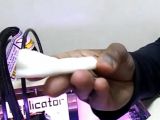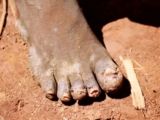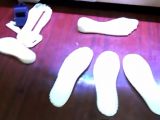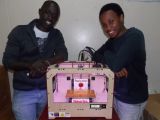Official college courses for 3D printing technology have only existed for a year or so, but other fields have been using additive manufacturing for a lot longer. Because of that, many of the coolest 3D printed inventions come from undergraduate students.
Such is the case of the Happy Feet shoes that just got launched in Kenya. Harris Nyali, a 22-year-old mechanical engineering student at the University of Nairobi, is one of the people behind the invention.
The other person is considerably more famous, at least in certain circles: 23-year-old Roy Ombatti, a finalist in the 3D4D Challenge which seeks to use 3D printing for social good. He is also the co-founder of the FabLab Nairobi Outreach Programme for kids, as well as a two-year International Development Design Summit alumnus, plus a Stanford Fablearn Fellow 2014.
Between the two of them, the inventors were able to create a pair of shoes that will improve the standard of living for 2.6 million Kenyans.
The Happy Feet and their purpose
In a nutshell, these are shoes specifically designed for people suffering from jigger infections. Jigger is a flea that can cause sores, inflammation and even autoamputation of digits or a person's actual death.
Even if the worst case scenario doesn't happen, jigger flea infections can lead to tetanus pretty easily, and other secondary infections.
Foot deformities are a common sight on those affected by jigger infections. Not a great way to live at all, especially when you consider that 1.5 million of those 2.6 million are children.
Areas with high infection rates can cause 50,000 students to drop out of school over the course of 20 months. Not being able to walk to school is one of the reasons, and the Happy Feet will help make that easier and less painful.
The Happy Feet are made out of recycled plastic and are printed using a MakerBot Replicator 3D Printer. They should offset some of the worst symptoms and prevent reinfection.
And since Happy Feet are part of a humanitarian project, Kenyans don't have to go hunting for them. Instead, a mobile lab can go through areas where people need shoes, recycle plastic bottles into filament, and then use said filament to create the shoes according to the needs of each customer.
Ombatti had to study 3D printing and shoemaking for a few months, but European outfits Baltan Laboratories and HIVOS helped that along.
Other applications
Even people without jigger infection can benefit from the shoes. Not just because they're a sure way to get rid of some of the plastic litter, but also because they are probably the only correctly fitted shoes that many of the rural areas in Kenya are likely to see. They can also act as preemptive measure against the infection, which is always a plus.
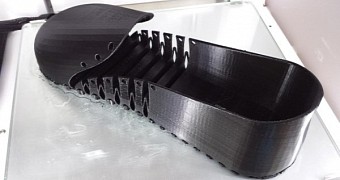
 14 DAY TRIAL //
14 DAY TRIAL // 

